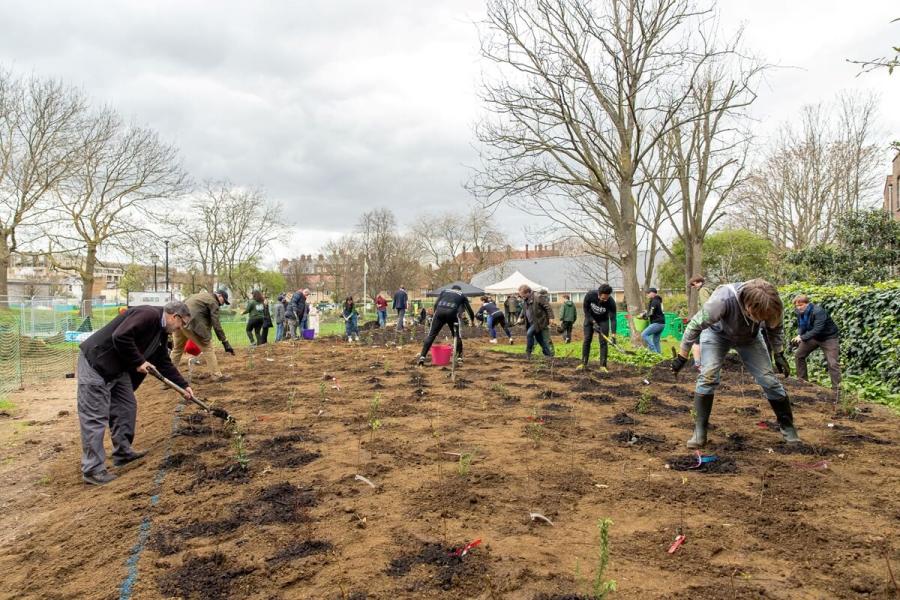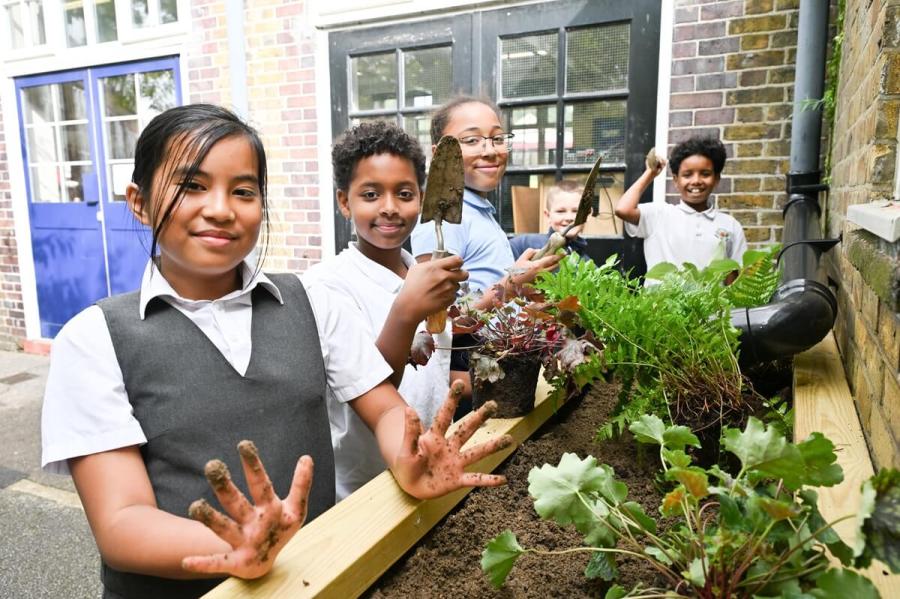Climate adaptations are actions that protect us against the current and projected impacts of climate change. Adapting our environment is becoming ever more urgent as the global average temperature rises and extreme weather events become more frequent.
Climate change means that London can expect to see hotter drier summers and warmer wetter winters. This poses challenges for H&F. As a densely populated inner London borough, we are susceptible to extreme heat due to the urban heat island effect. We are at risk of surface water and sewer flooding caused by increased rainfall as much of our borough is less than five metres above sea level and has low drainage capacity. Rising temperatures are contributing to London's growing water deficit. These issues endanger people's health and wellbeing, put strain on public services and cost our economy.
It is imperative that we implement adaptations to increase our resilience to the effects of climate change. This aligns with the council's wider work to address inequality in the borough, as climate change impacts are not felt equally. The elderly, those with pre-existing health conditions, low-income residents and people living in poorly insulated housing are particularly vulnerable.
Progress in H&F
Adaptation has become an increasingly important area of focus for H&F. In 2024 we expanded our understanding of the adaptations needed to protect the borough, undertaking a largescale Climate Risk Assessment and developing recommendations for an Adaptation Strategy based on our results. We delivered projects to improve the resilience of our borough and engaged residents in this vital work.
Extreme heat
- Projects to 'green the grey', such as the delivery of 27,957m2 of green roofs through H&F's planning process, are helping to keep homes and businesses cool during heatwaves.
- Our efforts to increase the number of trees in H&F, from planting new Tiny Forests to completing H&F's Tree Strategy, will help to address excessive heat due to the natural cooling effect of trees and their provision of shade.

- H&F contributed to Cool Spaces, a map produced by the GLA to pinpoint areas of shade to help Londoners keep themselves safe during our increasingly hot summers.
Flooding
- We continued to deliver sustainable drainage systems (SuDS) throughout 2024. SuDS manage water in ways that mimic natural drainage processes and reduce flood risk, such as by replacing hard surfaces with permeable alternatives that allow water to infiltrate the ground. As of 2024, we have delivered SuDS in 43,481m2 of our highways.
- The council helped pupils at Old Oak Primary School to install planters in their playground, which capture rainwater and slow the flow of water to drains. We also hosted sessions to teach pupils about SuDS and their importance in the context of a changing climate.

Water scarcity
- We have increased the efficiency of water supplied in council homes and buildings with Automated Meter Reading technology, which detects leaks and higher-than-usual water usage. Our equivalent water-related carbon emissions have fallen by more than ten tonnes due to the water we have saved.